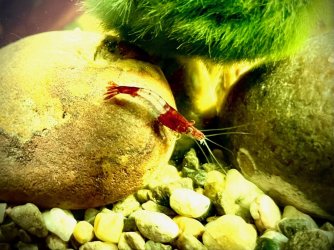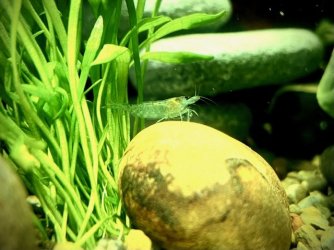O
On_a_dishy
Guest
I went to my LFS to get some plants and, as you do, I came back with 3 shrimp and wonderment as to why I've never kept shrimp before because they're completely brilliant.
Anyway, my new tank, which is intended for a betta, is at the end of some fishless cycling which has gone weirdly well thanks to a combination of serendipity (ammonia produced by a dying plant) and a variety of different bacteria from different bottles. Parameters are currently (34L tank):
GH 180 (I can't seem to get this down)
KH 120 (down from 180)
PH 7 / 7.5
Nitrite 1 (I know this needs to be 0 and it will be in the next few days but I don't want to do a massive water change and potentially affect the cycling)
Nitrate 40
Ammonia 0
Anyway, my shrimp can't get enough of the water flow produced by the pump and I'm wondering if this is caused by stress rather than joy. They try to swim up against the flow as it slops back down into the water in a corner of the tank (I have the exit pipes pointing against the glass but might have to change it as I'm worried they'll get hurt). I've never kept shrimp before...other than to feed betta...
Attached are photos of my 3 new friends, because they're just great!
Anyway, my new tank, which is intended for a betta, is at the end of some fishless cycling which has gone weirdly well thanks to a combination of serendipity (ammonia produced by a dying plant) and a variety of different bacteria from different bottles. Parameters are currently (34L tank):
GH 180 (I can't seem to get this down)
KH 120 (down from 180)
PH 7 / 7.5
Nitrite 1 (I know this needs to be 0 and it will be in the next few days but I don't want to do a massive water change and potentially affect the cycling)
Nitrate 40
Ammonia 0
Anyway, my shrimp can't get enough of the water flow produced by the pump and I'm wondering if this is caused by stress rather than joy. They try to swim up against the flow as it slops back down into the water in a corner of the tank (I have the exit pipes pointing against the glass but might have to change it as I'm worried they'll get hurt). I've never kept shrimp before...other than to feed betta...
Attached are photos of my 3 new friends, because they're just great!




